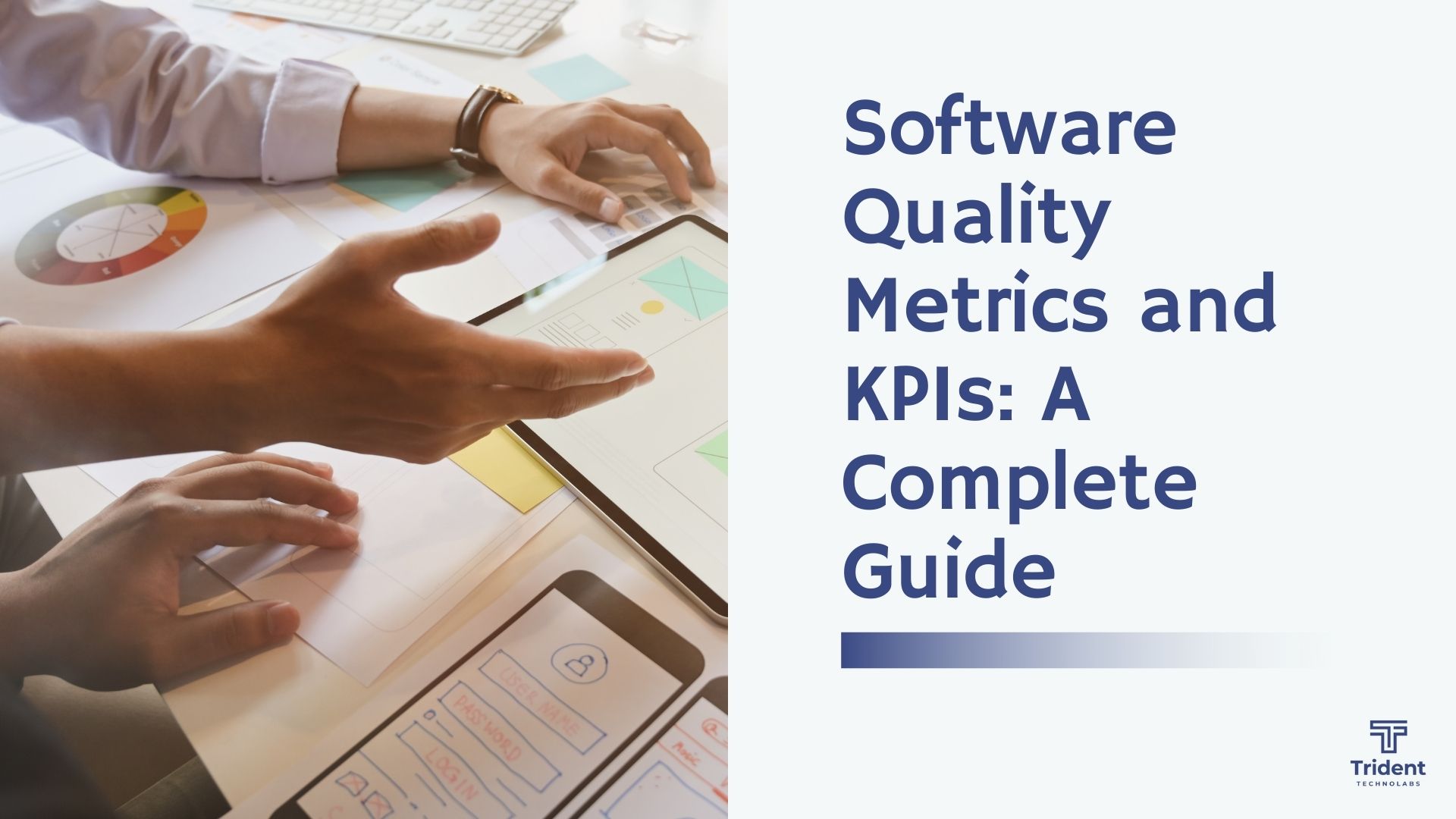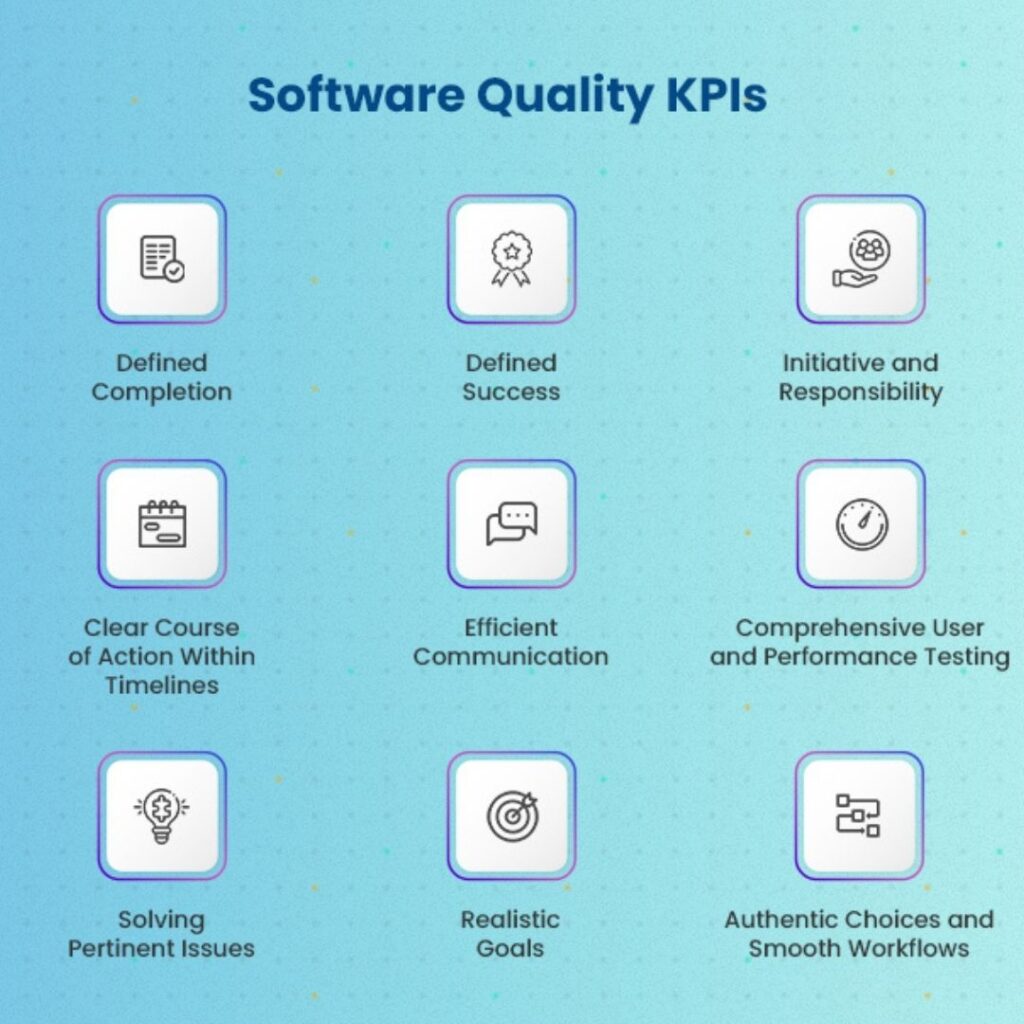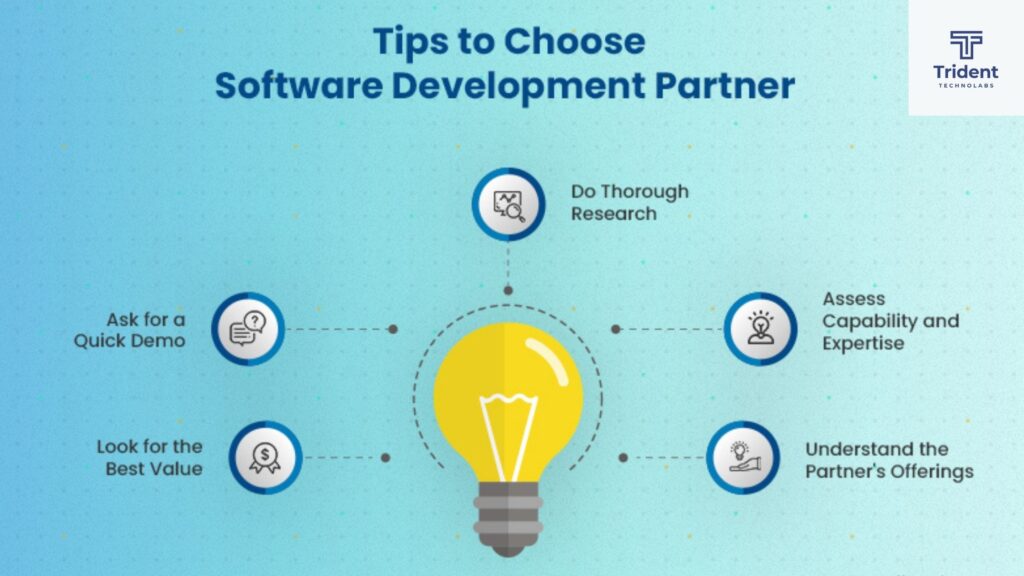
Software Quality Metrics and KPIs: A Complete Guide
Technology projects miss the mark at a shocking rate. According to a report by Teamstage, 25% of development projects bomb; another 20 to 25 percent don’t show any benefit from the tech assets they’ve spent on; and 50% of all projects require major overhauls to bring them up to speed.
What’s more, the cost of project delay/failure Software Quality isn’t simply monetary or temporal. These losses dampen employees who have toiled tirelessly to finish a lot of the work. Reputations are lost, and legal battles emerge. And all of this happens because someone didn’t pay the required attention to quality during software product development.
To help your development meet quality and efficiency standards, we present a list of software quality metrics to consider while working on your development project.
Software Quality KPIs
How does one decide whether the code created is good or not? The answer? Software quality KPIs. With the help of the five metrics below, stakeholders can judge whether the software created is up to scratch or not. Software/Code quality metrics can be easily segregated into five headers to answer the question how to measure software performance:
- Reliability
- Portability
- Maintainability
- Testability
- Utility
These five testing metrics in Agile can further be broken down into components that need to be considered if the enterprise wishes to achieve project success.
Defined Completion
Project failure begins when we can’t figure out what ‘done’ looks like. Without a cohesive vision of ‘done,’ we’ll never recognize it if and when it shows up. For a distinctly defined ‘done,’ time taken, asset utilization, and specialized feature inclusion are clear metrics.
These proportions of progress disregard to portray what business capacities our project needs to deliver or what mission we are attempting to achieve. Needs drive features. Subsequently, a fruitful development initiative cannot be conveyed without first defining the requirements and then matching them to ‘completion.’
Defined Success
Other than not having characterized what ‘done’ is, another issue with IT projects is undefined criteria to determine project success.
A development initiative can be fruitful if success standards are clearly defined. Sadly, many projects function without clarity on the concept of success. When beginning a development initiative, it is fundamental to work effectively with the association that owns the project to characterize success across three levels:
- Project delivery
- Product or service
- Business
For example, an organization will say it needs to improve customer support/client care. But no one tries to define what that means and incorporates. More limited call times? Fewer calls? Higher consumer loyalty? How should you understand when you’ve succeeded? Having answers to such questions ready, will help form a superstructure that development efforts can draw reference from to define success.
Initiative and Responsibility
Consistently, tech projects are considered ‘IT’ activities and entrusted to the IT department, with the other departments paying little mind to the project. If a project doesn’t have buy-in and support from the C-suite and department leaders, it’s hard to prepare employees and equally hard to tell who is in control when authority questions emerge.
With departments working in silos, an absence of responsibility can arise. If your tech team can’t sufficiently clarify what’s happening with the task or why it’s required, that is a huge gap.
If management isn’t driving the task and yet considers the team responsible, the project can implode, causing a massive loss of time, effort, and resources.
Clear Course of Action Within Timelines
How should we get to ‘done’ on time and within budgets as well as accomplish satisfactory results? We need a course of action to get to where we are going, arriving at ‘done.’
Without a reasonable timetable and a plan with computable achievements, any task (tech projects specifically) will stray from the original path and wander through various diversions and time-consuming iterations. A reasonable plan and somebody to screen it is crucial to keep these projects pushing ahead.
Efficient Communication
As referred to above, somebody in the tech team needs to have the alternative to regularly clarify the project’s subtleties to the ‘non-tech’ stakeholders, internal and external. It’s crucial for somebody in the team to have solid representation and story-telling abilities to convey what’s new with the project.
Comprehensive User and Performance Testing
An absence of genuine user testing before dispatch is a typical issue. Make sure to catch up on all there is to know in terms of
Unit testing vs Functional testing. The programmers, system architects, and business experts think they comprehend what clients need, yet clients may have totally different requirements and issues.

When Quality assurance in software testing metrics directed towards users is conducted, the project needs to focus on tending to feedback and criticism.
Solving Pertinent Issue
This issue is seen repeatedly with IT projects: organizations believe they’re making something to address the issue, yet it turns out they’re tending to a different issue. In a client support model, if the organization concludes that limited call times are the measurement for improved client assistance, employees are now incentivized to get off the phone as fast as possible, which could improve client support by the definition of the project. However, as call time diminishes, clients may be even less fulfilled than before.
Realistic Goals
In Hollywood, they say it’s not difficult to make an awful film from a nice script, yet difficult to make a nice film from a terrible script. Even though an awful idea isn’t apparent immediately, but when it is, never expect that you’ll make it work or acknowledge that you’ve contributed an inordinate measure of exertion to change course. The sunk costs are real.
It should be compulsory for larger or high-risk projects to gain approval before you bounce heedlessly into execution. You need to reconsider when you realize that an idea won’t work. It’s typically difficult to fix an awful idea, and you’ll simply sit around, wasting money and energy.
Authentic Choices and Smooth Workflows
A project hosts various groups keen on its result, and each group may have unique expectations and objectives. Many projects go through months working with various enterprise heads and aligned software programmer KPIs only to have the painstakingly designed project destroyed by the organization’s different heads of division.
Each requested changes to meet their necessities. The reason for the project’s failure was that the development team failed to understand who really owned the project and therefore didn’t oversee anticipated contentions and frustrations ahead of time.
Input and administration are fundamental components of any development initiative. However, a decision by committee rarely prompts optimal results.

Tips to Find a Development Partner That Can Match Your Quality Standards
Now that you know the KPIs of ensuring software quality, it is time to address the other side of the coin. For superlative software quality, you need an experienced partner. But given that the market is almost at saturation point with tech companies clamoring for your project, you need to make an informed decision to avoid project failure while staying aligned with quality KPIs in software development
This section collates a rundown of what qualities you should be looking for and ways to measure software quality while choosing a partner who can offer top-notch outputs. But before that you need to ask this question to yourself:
Why Are You Looking for a Software Development Partner?

Before outsourcing software development, you need to understand the ‘why’ of the entire endeavor. Understanding why you have decided to outsource will help you choose a partner, given that you know what you are looking for in one.
Is the front-end of your software development initiative that you wish to outsource, or is it the back-end? Or do you desire both the server as well as the client-side to be taken care of?
It could be possible that your in-house IT team is now spread a little too thin, and you are looking to augment the team with a few additional resources. It could also be that your enterprise does not have an IT department and requires the entire software development initiative to be outsourced.
Setting clear goals and objectives will help you on the way while choosing an ideal development partner.
Remember to put everything in writing and make detailed assessments of your goals, how achievable/realistic they are, what the market has in terms of partners capable of fulfilling your goals, and how much it would cost you in the end.
1. Thorough Research
When you know what you are looking for, the task of pinpointing aligned and capable candidates becomes a lot easier. In today’s world, you can Google for a partner, and most of the results you come across will have little or no qualms in promising the world to you.
Instead of going by what the prospective partner’s promotional content states, make it a point to look at reviews, case studies and testimonials, and third-party recommendations. Having a clear idea of a prospective partner’s service scope and expertise is crucial.
Quora happens to be a great place to discover honest opinions, and Clutch ups the ante even further with vetted ratings of the companies that make its lists.
Considering testimonials is also very important. These are statements of how previous clients feel about their association with the prospective partner and how they matched client expectations.
Sometimes an enterprise brings a partner on board but finds that the partner falls short of their promises due to a lack of research. There are multiple reasons to find a new software development partner, as replacing a ship’s floorboards is better than plugging holes.
2. Assess Capability and Expertise
The partner you choose should match all requirements of capability, expertise, and prior experience while coping with the scope of your development metrics. It doesn’t make sense to bring a company with ten developers to deliver your project in three years. The partner should have aligned and vetted expertise in crafting software that addresses client pain points, utility, and the overall experience of user interactions with the software.
Besides core coding capabilities, an ideal software development partner should also have the required business expertise to reach your business goals. Some quality KPIs in software development are-
- Coding standards
- Code analysis
- Tech stack capabilities
- Refactoring/iterations
3. Understand the Partner’s Work Culture
Your prospective development partner should be a good cultural fit for your company. Assessing the personality of a to-be partner can offer valuable insights into its company values and practices.
It would help if you had a clear understanding of their ethics, goals, and modus operandi. Ensure that the development partner you choose has a committed workforce, pays attention to even the small things, and is truly passionate about what they do.
A prospective partner’s culture dictates how your teams will collaborate while sharing insights that only a dedicated software developer can offer. While you and your development partner need to be on the same page, the partner’s company culture will also let you know if you are hiring a posse of ‘yes men,’ or conversely, a gang of naysayers.
The best way to assess work culture is to have detailed conversations with individuals across hierarchies to understand the underlying ethos of their work.
4. Interviews, Interviews, Interviews
Merely interacting with the prospective partner’s sales team and outsourcing your project to them is not advised. Sales tricks can ‘glam up’ even the rustiest and obsolete tools and techniques. Make sure that before you settle on a partner, you have also met the development team. You need to ensure that the company’s development resources can deliver what the sales rep promised.
When you begin shortlisting companies, assess whether their development team is competent enough to deliver your requirements and whether the team matches your software programmers’ KPIs and software delivery performance.
5. Don’t Let Price Supersede Value
Price is undoubtedly a crucial factor while choosing a development partner. However, it should never be the primary one. Remember that ‘Cheap’ doesn’t always mean ‘Best.’ You might initially save a little cash by choosing a cheap partner, but bugs, unending maintenance requirements, and poor code quality and coding standards can result in major expenses in the long haul. Software QA KPIs also need to be taken into consideration. Some software QA KPIs in a software QA process audit are-
QA metrics in software testing:
- Issue Identification
- Feature Hierarchies
- Metric efficiency
- Change logs
- Feature improvements
Inversely, bringing an expensive development partner on board doesn’t automatically guarantee a high-quality end product. The importance of Software testing is paramount. Revisiting the second point in this list, conducting thorough research to understand what the partner can offer is critical.

In Summation
Ensuring software quality is a complex task. A lot rides on your development partner, so make sure you clearly understand your options and have a fair idea of their outcomes. The factors mentioned above aim at helping you make an informed decision.
When it comes to software development, you require a partner who can develop a solution that fulfils your customer’s needs while helping your enterprise achieve its business goals. The ideal development partner should understand your business’s finer intricacies and serve as a catapult, propelling your business towards success.
If you happen to be looking for a reliable software development partner and are confused, given how inundated the market space is with options, then you have reached the right place.
With over two decades of curated expertise in the software development sphere, Trident Technolabs has built a name for itself as a consistent success creator with 400+ projects delivered successfully to a client base that spans 25 countries. If you have a development issue, we have its solution.





Leave a comment: